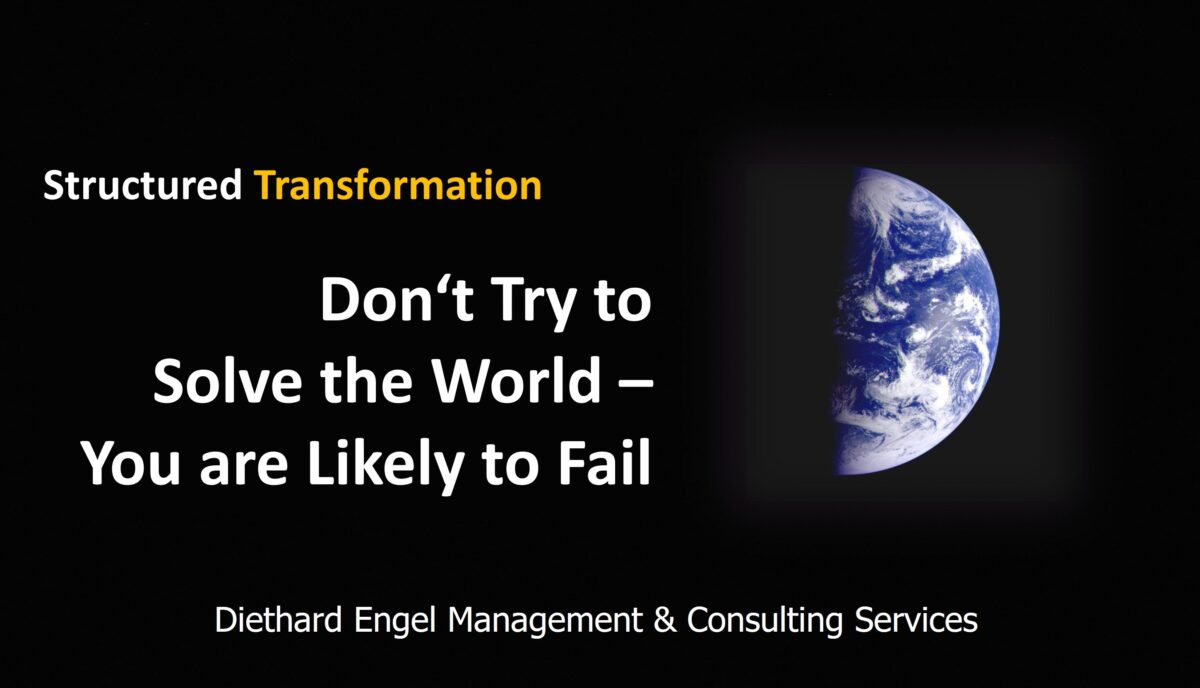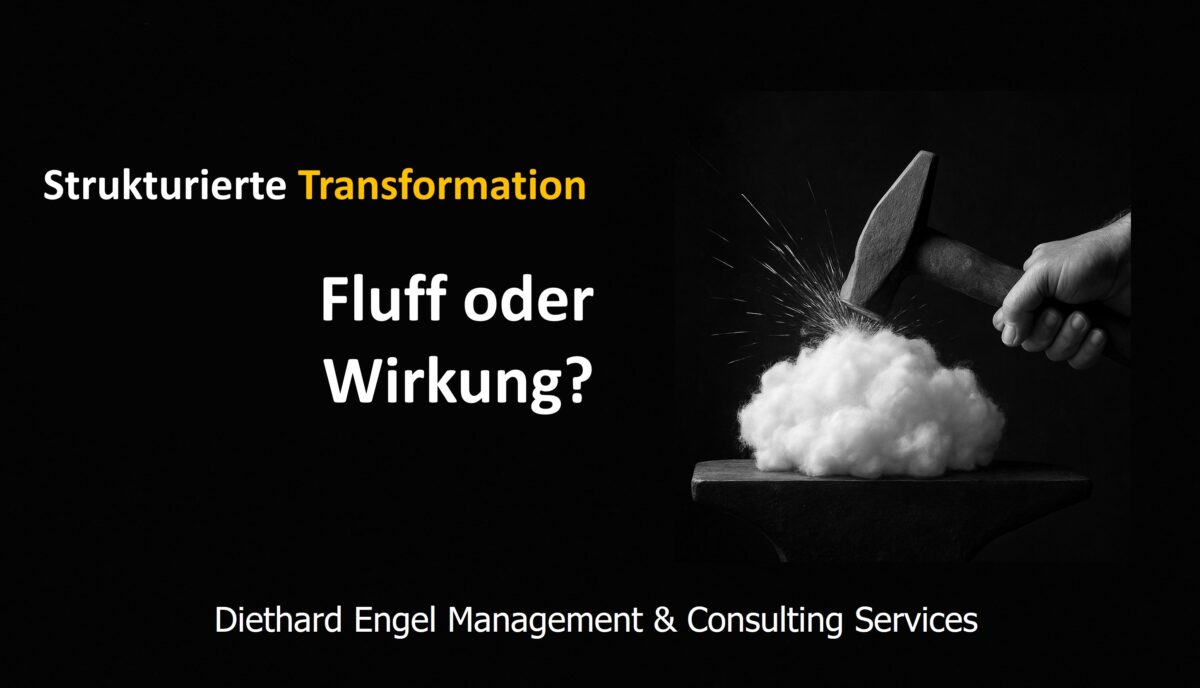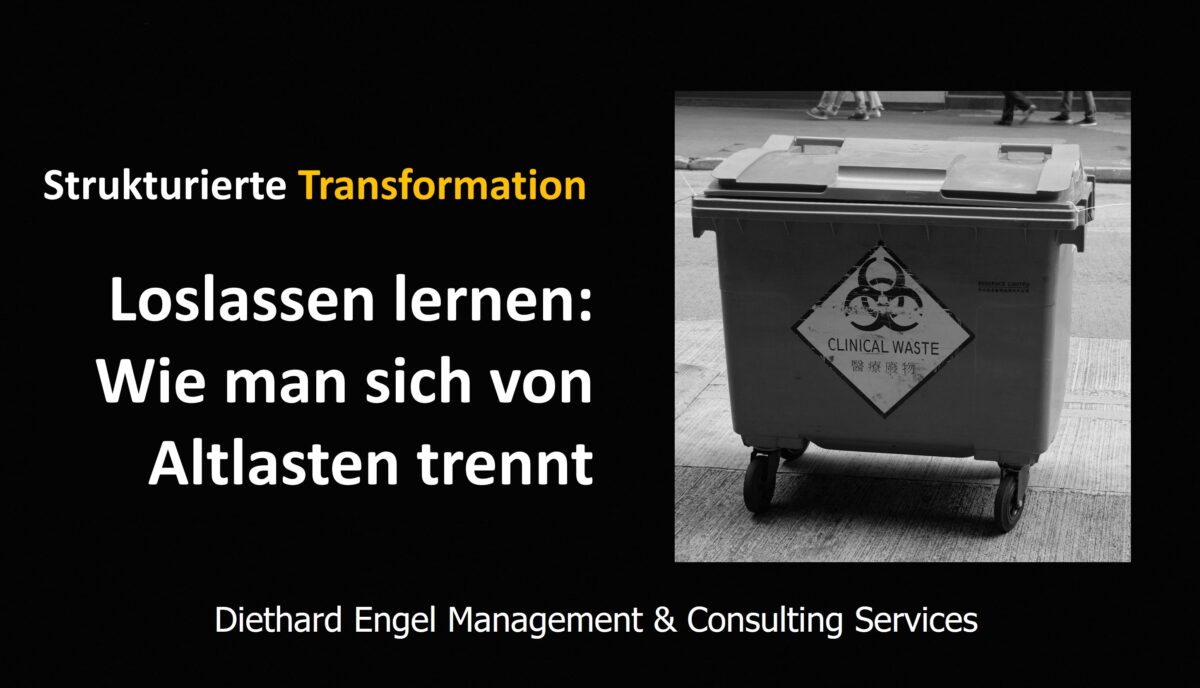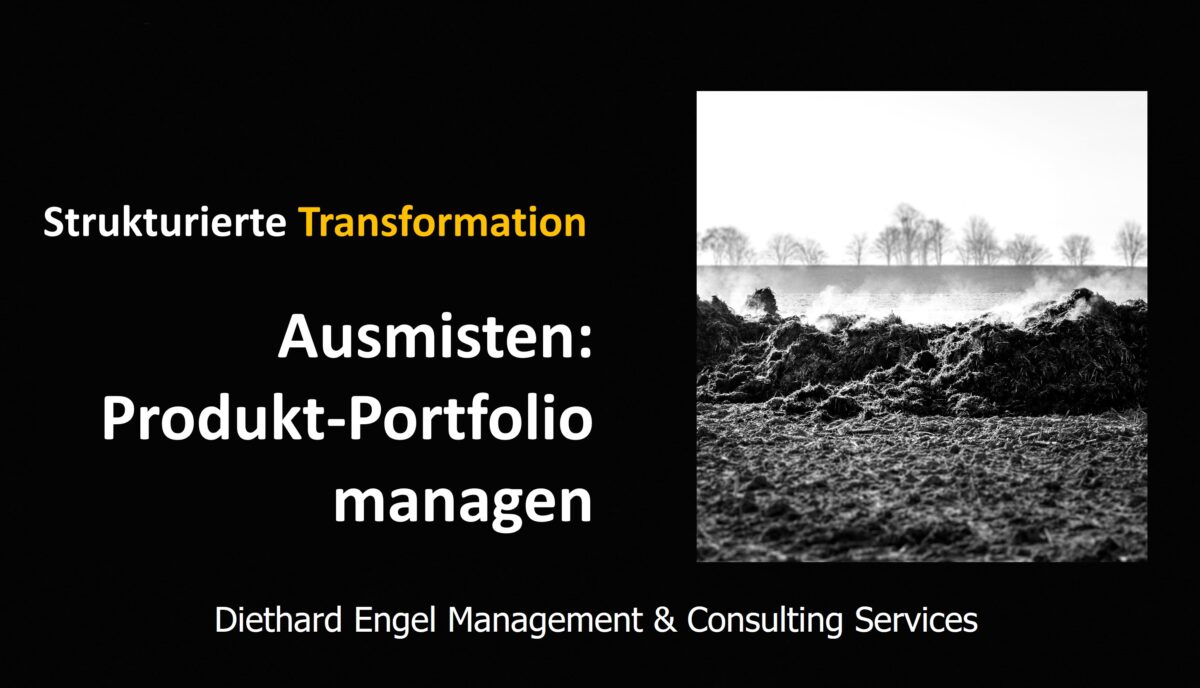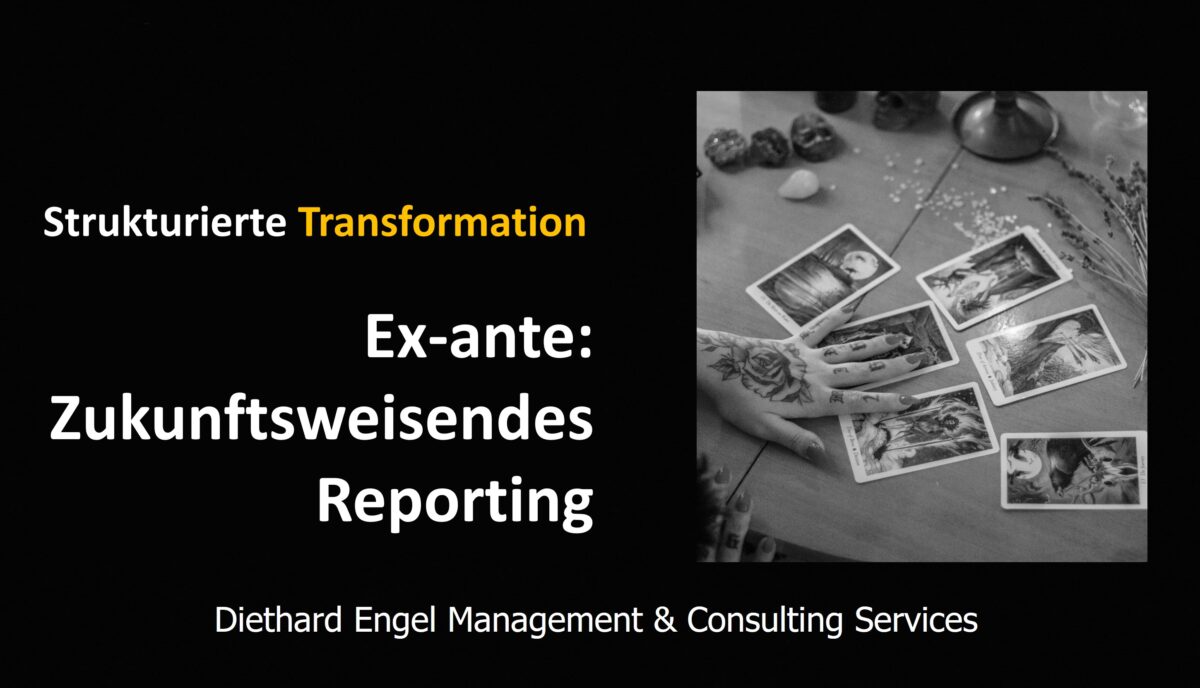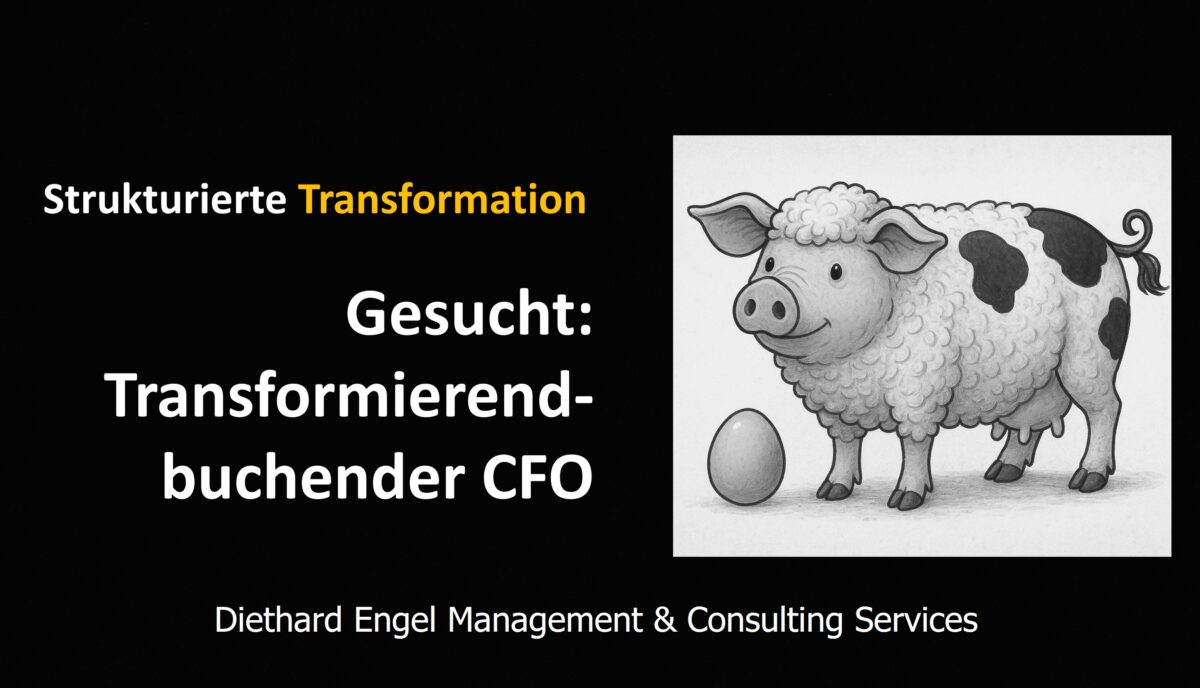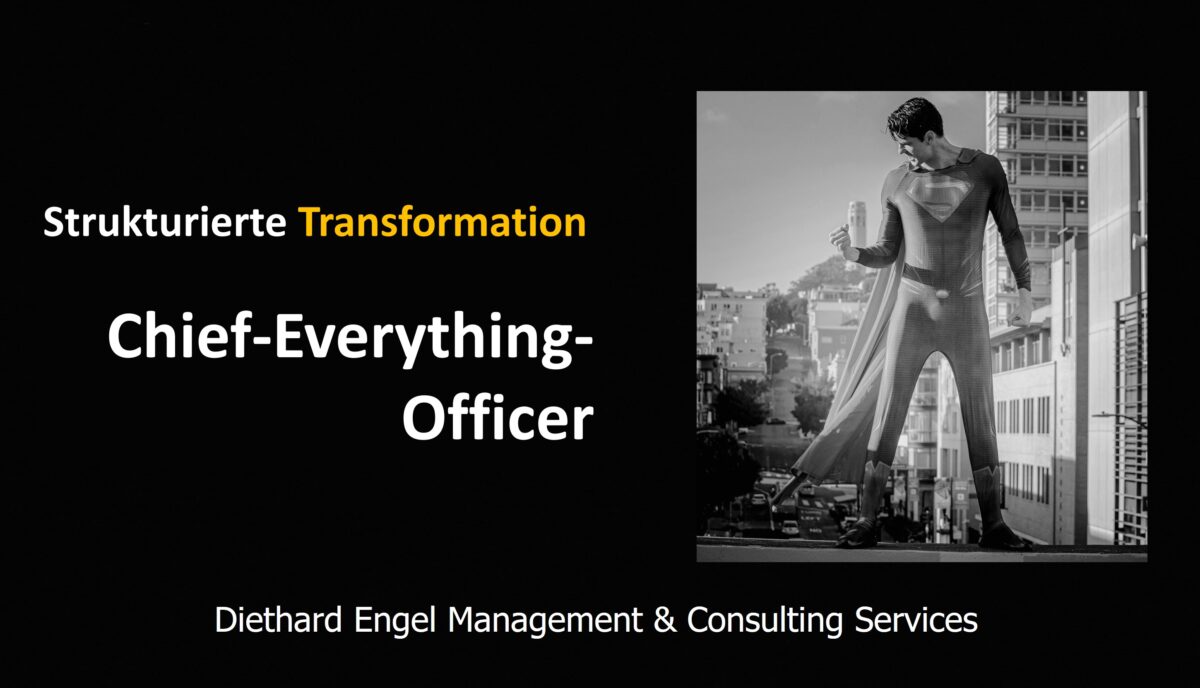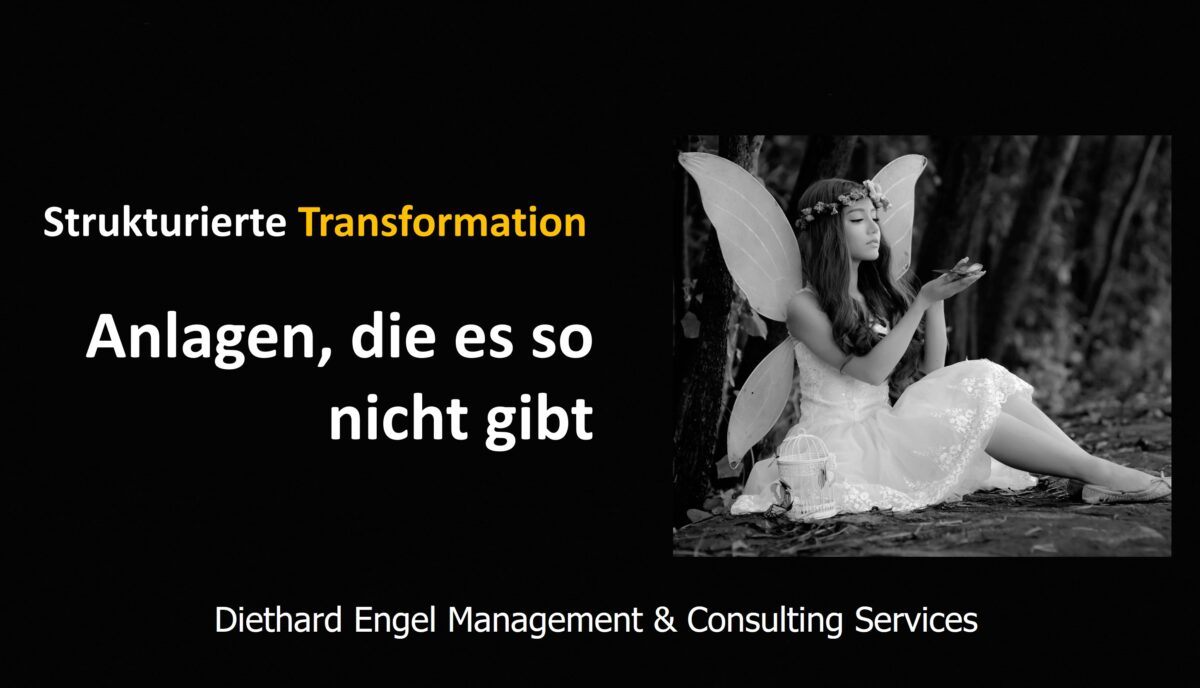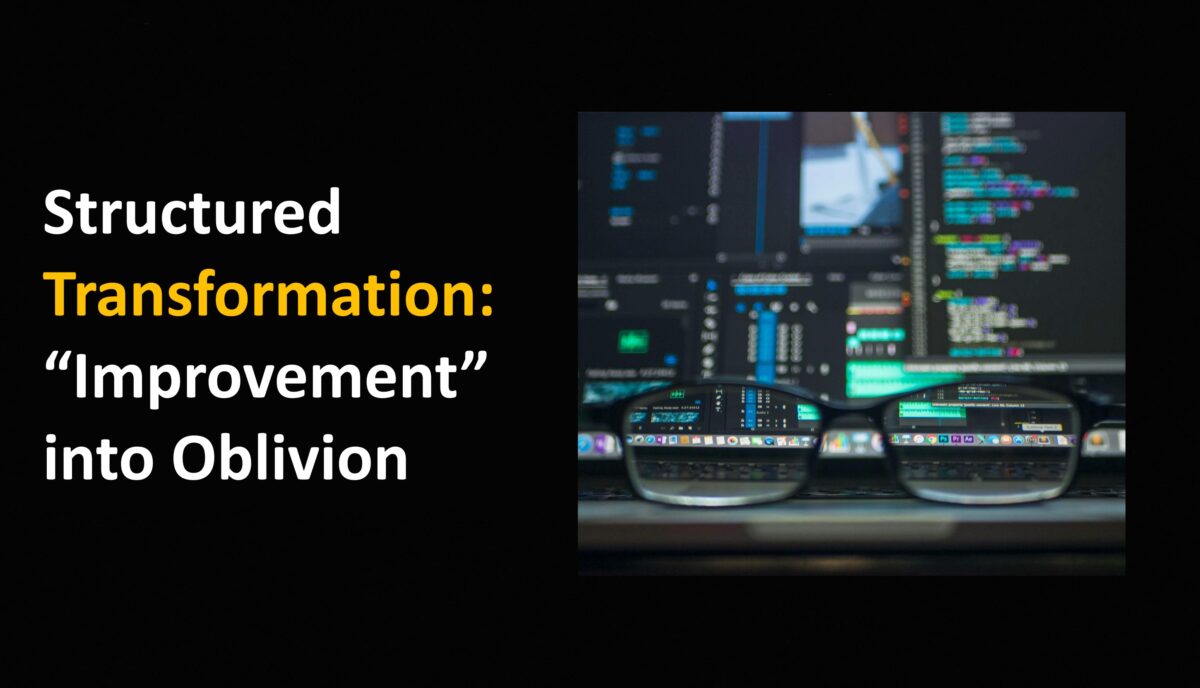A mentor once told me: “If you try to solve the world, you’ll likely fail.”
She was right. And yet—many leadership teams unconsciously fall into exactly that trap.
Especially in change or transformation initiatives, the instinct is often:
“Let’s fix the business as a whole and be done with it.” But when you open every construction site, focus dissolves, momentum stalls, and the organisation becomes paralysed.
You don’t need the Big Bang. You need a starting point.
In most companies, the C-suite already knows where the real issues lie. The problem is not awareness—the problem is prioritisation.
The question is not: “How do we transform the organisation?”
The question is: “Where can we achieve the greatest impact, fast?” Once that is identified, you can work through three simple checks:
1️⃣ What’s the single issue with the largest value-leverage?
Not the loudest problem.
Not the most emotional one.
The one that moves EBITDA, customer satisfaction, or operational stability the most.
2️⃣ Which interfaces need to be pulled in?
No change lives in isolation.
Where does the process “touch” Finance, Operations, HR, IT, Supply Chain?
Who needs to be aligned early to avoid resistance later?
3️⃣ What downstream effects will this create?
Good change creates second-order opportunities: Clarity, process clean-up, standardisation, capacity release.
These become the next steps—sequenced, manageable, and actually executable.
Focus is not a luxury. It’s the only way to deliver.
If you try to solve the world, you’ll almost certainly fail. If you solve one well-defined issue—the right one—you’ll create visible success.
And success has momentum: It fuels ambition. It builds credibility. It encourages people to take the next step.
Transformation is not a heroic all-at-once act. It is a series of targeted, well-chosen, jointly delivered measures—each one making the organisation stronger and more capable.
If this resonates, let’s talk. I have helped businesses to start and execute their transformation – one step at a time.
